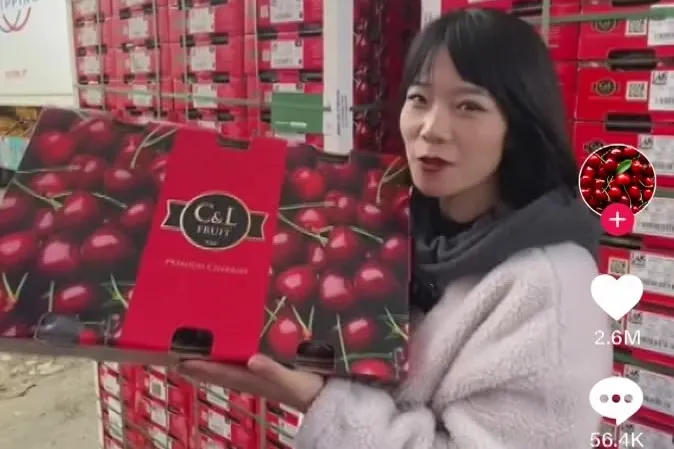Chile is the main supplier of cherries to China, exporting about 95% of its total production to this market. In the 2023-2024 season, more than 400,000 tons of Chilean cherries were shipped to the Asian giant. The logistics behind this process are designed to ensure that the fruit arrives in optimal condition for the Chinese New Year, although unexpected events may occur that could delay the landing.
Faced with the need to improve the post-harvest conditions of the cherries, the Ñuble Farmers' Association turned to the regional government to ask researchers from the INIA to work on identifying conditions that ensure the quality of the fruit, giving rise to the project “Optimization of cherry harvest management.”
In this way, it was possible to address crucial post-harvest aspects, such as the use of proper harvesting containers, the optimal stages of ripening, and the preservation strategies to guarantee the quality of the exported fruits.
Variety Differences
At a seminar attended by more than 50 producers from the region, Cristián Balbontín, an INIA Quilamapu researcher and general project coordinator, presented the results of the study on the main cherry varieties grown in Ñuble. He indicated that the work focused on analyzing the ripening stages of the fruit and how these affect their quality during storage.
“It is essential to understand how ripening affects the quality of the fruit when it reaches the market, including storage times, shelf life, and harvest time,” emphasized Balbontín, adding that this knowledge is key to optimizing the quality of cherries shipped to China.
Consultant Christian Gallegos, invited to the seminar, stated that the quality of the fruit results from decisions made in the pre-harvest and harvest stages. “Quality is built from the opening of the flowers until the fruit is harvested from the tree,” he added, noting that post-harvest should focus on maintaining the quality achieved.

In the same vein, Cristián Balbontín emphasized that both pre-harvest and post-harvest must be synchronized. “We can make great efforts in post-harvest, but if the fruit doesn't have the right quality from the start, it will be very difficult to maintain it.” He also warned that high-quality fruit can be compromised if not handled properly in post-harvest.
During the project, the importance of differentiating post-harvest management according to the variety of cherries also emerged. In this sense, Santina, Lapins, Regina, and Kordia, which represent 85% of the varieties planted in Chile, behave differently during storage.
“For example, the Santina variety does not reach the firmness of Kordia, but it can increase during cold storage [...]; however, it loses firmness quickly, unlike Kordia,” explained Balbontín. He also said that knowing these details “would allow prioritizing shipment batches and adapting the handling of each variety to ensure they arrive at their destination in perfect condition.”
Quality Analysis
The project enabled the implementation of laboratory analysis capabilities that provide detailed information on the quality of the fruit, including firmness, weight, soluble solids, titratable acidity, post-harvest disorders, and differentiated storage. The INIA Quilamapu researcher stressed that these capabilities not only support farmers but also industry companies, providing accurate data to make informed decisions about fruit management.
Finally, Balbontín announced that the project will lead to the early publication of a manual that compiles the results and recommendations for producers.
At the closing seminar of the project, INIA La Platina researchers Edgard Álvarez and Bruno Defilippi, along with entrepreneur Sebastián Johnson, emphasized the importance of considering humidity and temperature conditions in maintaining quality during post-harvest.
Source: Portal Agro Chile
Image: SL Fruit Service
Cherry Times - All rights reserved













